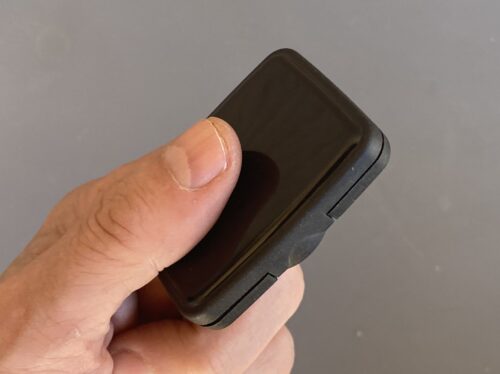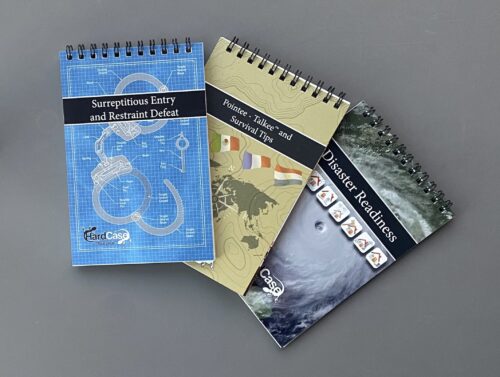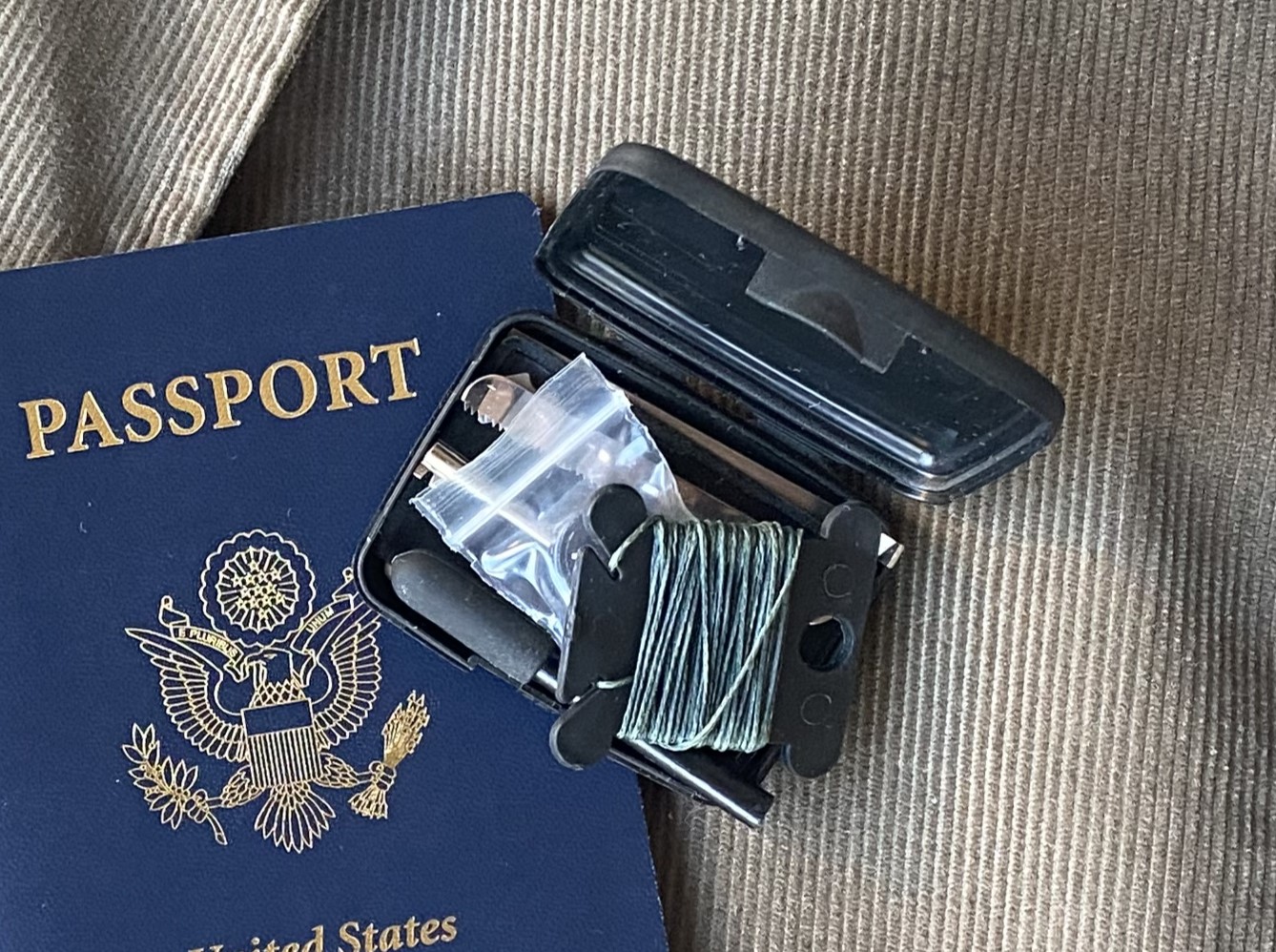Hard Case Survival OSS Micro S.E.R.E Kit
One just has to turn on the daily news or pick up the newspaper to know we live in an age of increasing terrorism and criminal activity. Hostage taking and kidnapping have dramatically increased as preferred tactics. No country is totally safe. Those at greatest risk include military and government personnel, foreign aid workers, and journalists in conflict zones, as well as recreational and business travelers in countries with a high risk of kidnapping for ransom and extortion. Of course, the best approach is to simply avoid travel to those high-risk areas, but this is not always possible.

Surviving a hostage situation or kidnapping is to a considerable degree a matter of chance and varies with the type of captor and situation. The first 45 minutes of a hostage situation or kidnapping are generally regarded as the most dangerous, since both the captors and captive(s) are highly stressed and prone to act impulsively. The more time that passes, the greater your chances of being released alive. If you are to be used as a bargaining tool or to obtain ransom, you will be kept alive.
The best opportunity for escape may take place at capture and while you are still in a public place. Things will likely get much worse after that. You need to be willing to incapacitate the threat if you are unable to escape. If this is impossible or deemed too risky, make as much commotion as is safely possible to draw the attention of others to you and your situation, so that authorities are immediately notified.
It is crucial to maintain a survivor’s mindset at all times. Preparation needs to start before an incident. Assess what dangers you may face and plan accordingly. Maintain situational awareness at all times. Don’t let your guard down. Think about an escape plan in advance. Be aware of escape opportunities during transit. Many Third World kidnappers are highly organized, with a network, including safe houses, to deal with their captives. When attempting to escape, your goal is to get outside the hostile forces’ perimeter.

Escape Tools
Well-concealedescape tools are often missed during initial searches by captors, and the captors will likely initially have less complicated and less secure restraints. These tools are an insurance policy when traveling in high-risk areas. Most small tools can be concealed by taping them to various places on the body, clothing, or footwear. Surgical tape is excellent for this. They can also be concealed under hook & loop uniform patches. There are numerous other possibilities, limited only by the imagination.
Layering helps ensure that if one tool is lost, discovered, or cannot be easily accessed, another tool will be available and accessible for use. It is essential to practice and become proficient with escape tools and techniques before you need them.
There are a couple of caveats. Concealing escape tools in or under items of value is generally a poor idea, as these items will likely be taken by captors. Hats should also be avoided for concealment, as they can easily be lost in a scuffle. Be intelligent about what you carry, why you carry it, and where you carry it. Have a narrative to justify its carry. Many tools and techniques can be employed to facilitate escape.

Hard Case Survival OSS Micro S.E.R.E Kit
Hard Case Survival was founded in 2004. The founder was a SERE (Survival, Evasion, Resistance and Escape) specialist in the U.S. Air Force. His goal in establishing the company was to offer products related to SERE and survival, with a focus on E&E (escape and evasion) gear. Hard Case Survival also currently offers 1–4-day training classes in surreptitious entry and restraint escape for LEO, government and military customers only. He is also the owner of Southern Specialties, manufacturer of high-quality lock picking tools.
Hard Case Survival recently provided me with its basic OSS Micro S.E.R.E Kit for evaluation. The company also offers the kit with an IR signaling expansion.

The OSS Micro S.E.R.E Kit comes in an ultra-compact, hinged, hard polymer case. The case measures only 56mm x 35mm x10mm, roughly the size of a Zippo® lighter. Hard Case Survival has packed a lot into the kit. It is very well thought out as would be expected from a company owned by a SERE specialist. All of the contents of the OSS Micro S.E.R.E Kit are of the highest quality. The basic kit includes:
OSS Mini 5 pc. Lock Pick Set: tension tool; saw blade; #9 hook; #E6 Bogota® rake; and #12 rake
Signal mirror, 35mm x 50mm w/silver 3M® signal panel on rear
10 ft Kevlar® string, green on flat bobbin
EZ Decoder™
Quick Stick™
S/S key style split pawl shim
Black ceramic razor blade
Ferrocerium rod and cap
Metal handcuff key (standard universal)
14mm mini oil-filled compass
The optional IR signaling expansion includes:
1×1” IR reflective square
Cyalume® 1.5” IR Mini ChemLight®
All of the items in the kit were chosen by Hard Case Survival for their ability to be easily hidden on the person and remain undetected should the need to escape a desperate situation arise. It provides a solid foundation to which users can add or subtract items based on need.
The case is only intended for storage to hold the items when they are not needed. E&E tools should always be properly layered / hidden on the body to lessen the likelihood of detection. The handcuff key, lock picks and shims in the OSS Micro S.E.R.E Kit are intended only to be used to escape unlawful custody and in accordance with all applicable laws. It is your responsibility to check applicable laws.

Hard Case Survival Training Manuals
A tool is only as good as the training in its use. It only works if you know how to use it. Hardcase Survival offers the Bogota® Everyday Carry Book as an option with the OSS Micro S.E.R.E Kit. The Bogota Everyday Carry Book is a 14-page training manual with detailed graphics and basic instructions on Bogota’s Quick Sticks, EZ Decoders and handcuff shims. It is easy to understand.
To further hone your SERE skills, Hard Case Survival also offers its 46-page Surreptitious Entry and Restraint Defeat Manual training manual with detailed graphics and basic instruction on 18 different unique tools, as well as its 44-page multilingual Pointee – Talkee™ and Survival Tips manual and its 42-page Disaster Readiness manual. They are all available for purchase separately. All Hard Case Survival training manuals are spiral bound to lay flat when open and have thick water-resistant pages.

Purchasing
Price for the basic OSS Micro S.E.R.E Kit is $48.00 USD. Add $5.00 for the kit with IR Signaling Expansion and $11.95 for the Bogota Everyday Carry Book. All Hard Case Survival products are available directly from Hard Case Survival.
Sources
Hard Case Survival
HardCaseSurvival.com
Southern Specialties
LockPickTools.com
Material Disclosure
I received this product as a courtesy from the manufacturer so I could test it and give my honest feedback. I am not bound by any written, verbal or implied contract to give this product a good review. All opinions are my own and are based off my personal experience with the product.
*The views and opinions expressed on this website are solely those of the original authors and contributors. These views and opinions do not necessarily represent those of Spotter Up Magazine, the administrative staff, and/or any/all contributors to this site.

